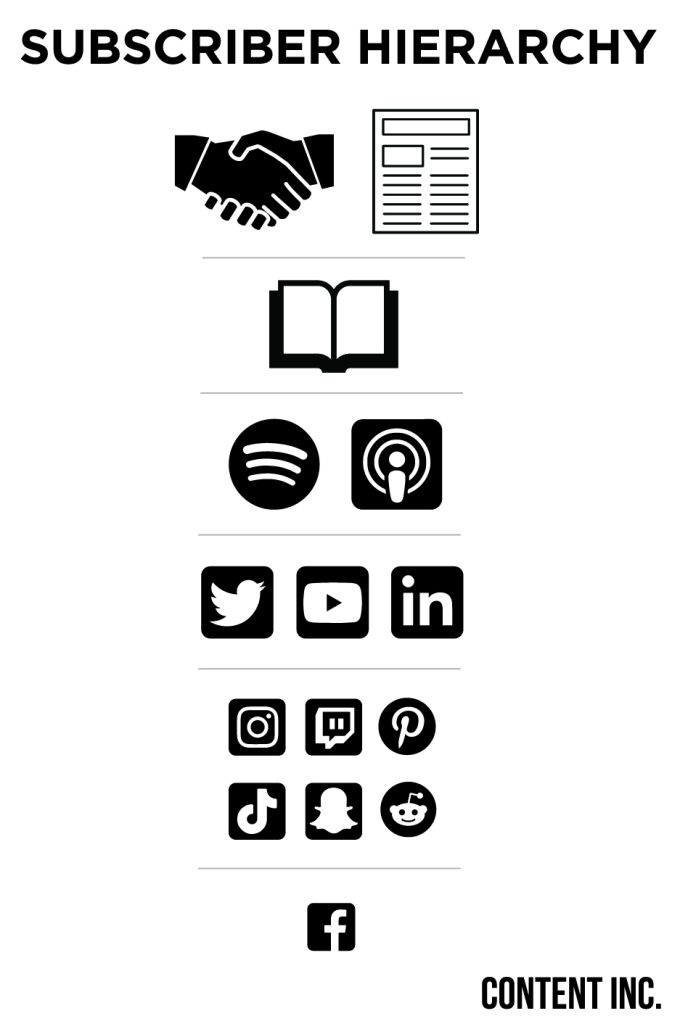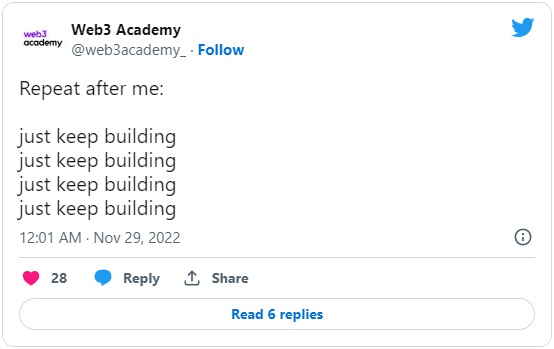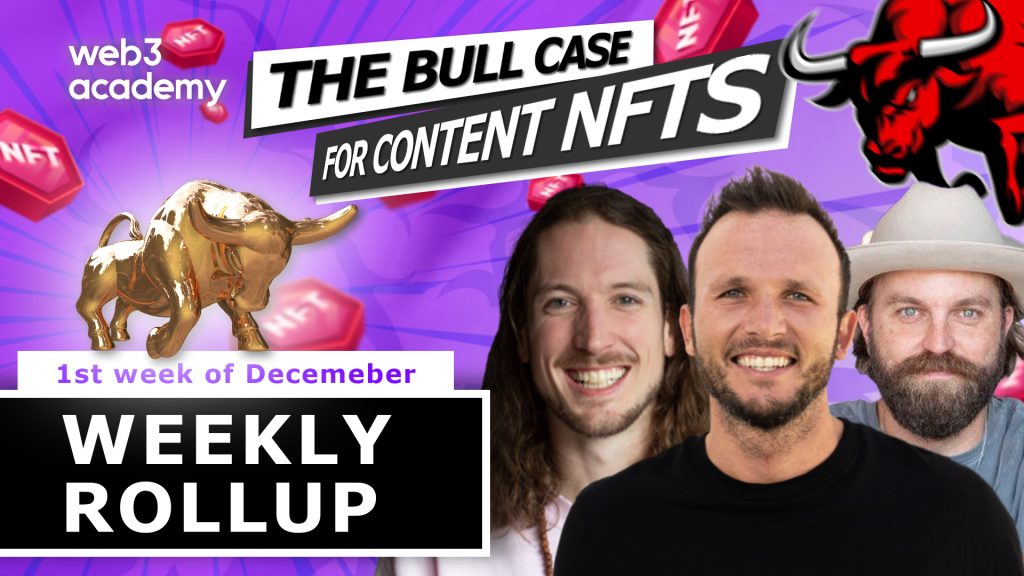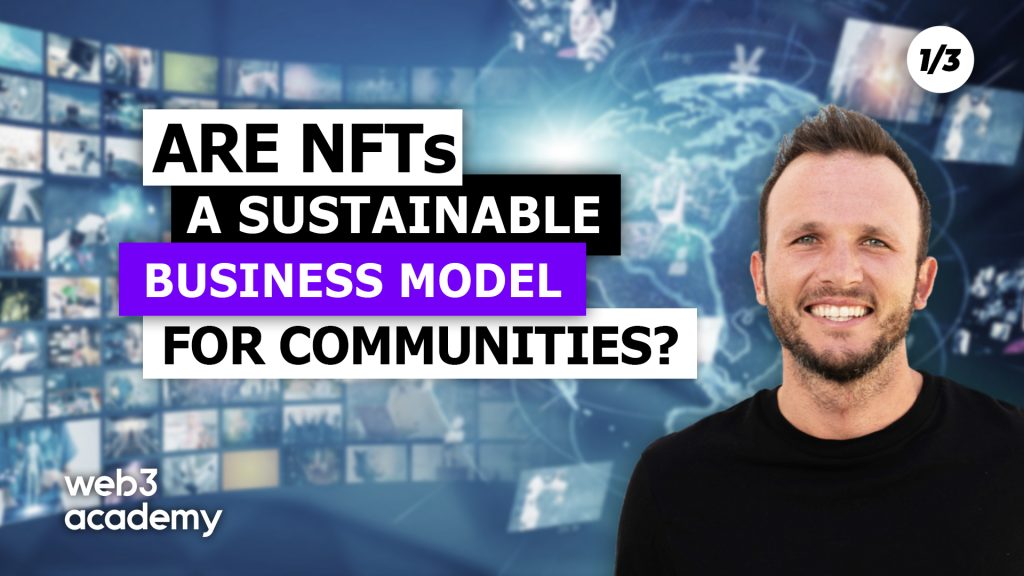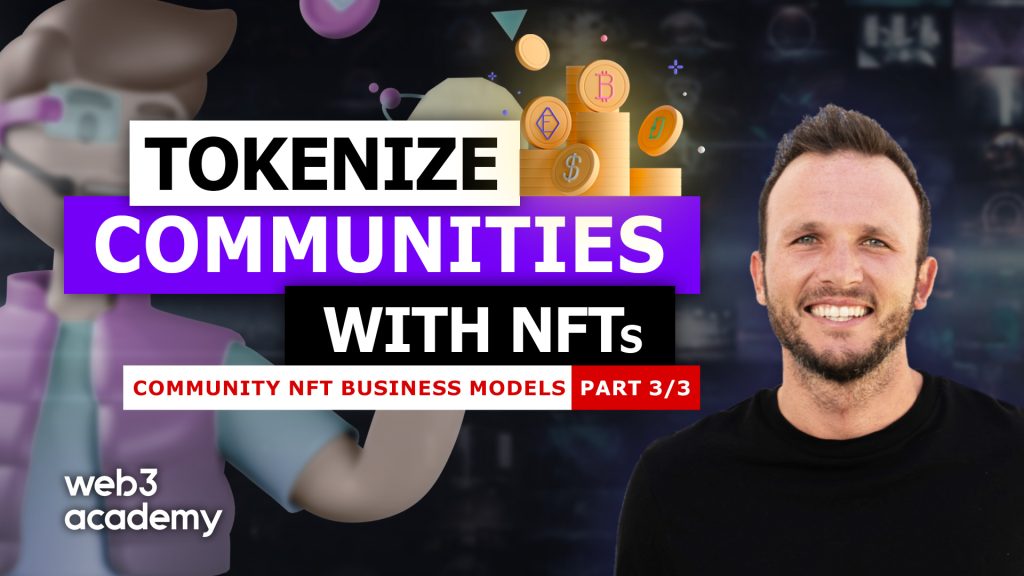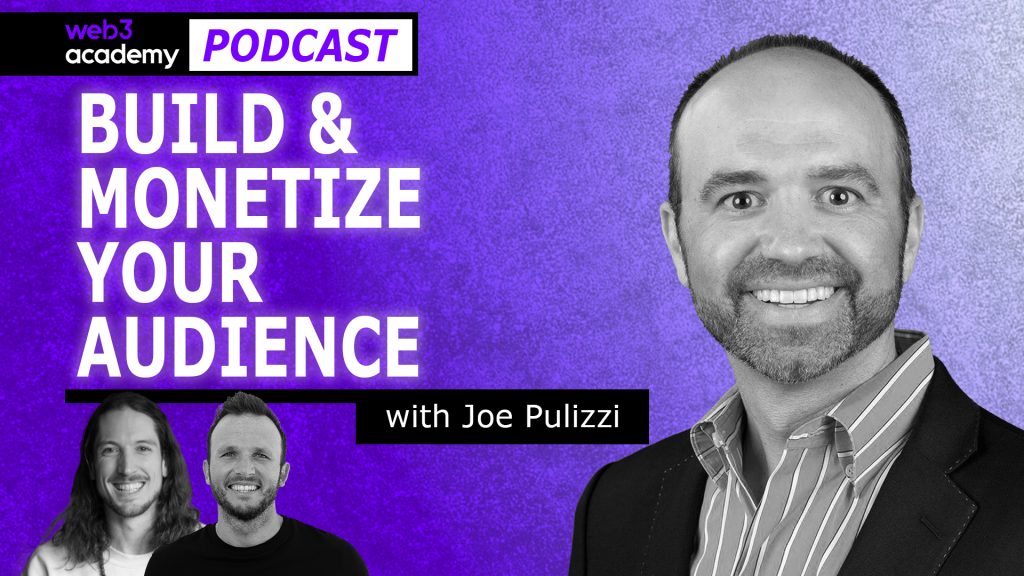
How to Build and Monetize an Audience in the Creator Economy | Joe Pulizzi from The Tilt
And No, We're Not Just Talking About Building Social Audiences
Prefer listening? Get the low down on the creator economy through your favorite platform 👇
GM web3 explorers!
The creator economy is gaining steam with roughly 50 million people considering themselves creators worldwide.
But out of these people, 93.4% call themselves amateurs 🤯
That’s why we’ve brought in content marketing expert and creator economy educator, Joe Pulizzi to tell us how it’s done!
In this week’s DOer Spotlight, we discuss:
- What the creator economy is and what’s at the heart of the industry 🤔
- Building and monetizing an owned audience rather than a rented one 💰
- Joe’s experience of tokenizing The Tilt and how you can think about using tokenization in your business 🚀
Let’s dive in!
Tired of web2 social? Then make sure to check out Lens Protocol 👀
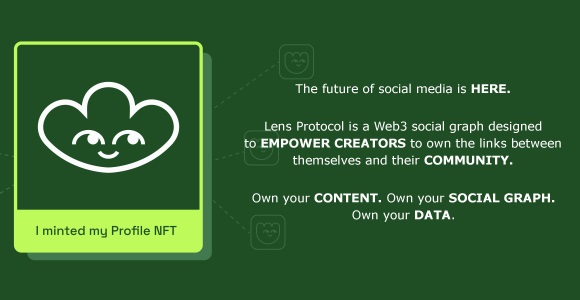
What Is the Creator Economy?
When you typically hear about the creator economy (CE), you’ll hear about all the big tech companies, such as Facebook, Twitter, Substack, etc.
While these companies are part of the CE, Joe believes that content creators are the ones at the center of the industry. In particular, creators who are trying to build a full-time independent business from their content, striving to become what Joe calls a Content Entrepreneur.
Now, this is not to hate on social media and other creator-focused businesses. These companies are vital at many stages of the creator’s journey, so Kyle always backs them up.
Sure, they’re not perfect. But without them, it’d be much harder and more expensive to build an audience.
But your ultimate goal should be to own your audience.
Why It’s Important To Own Your Audience
Even in the early web2 days, Joe has always been a proponent for creators owning their audiences. And that’s the reason why he has social media at the bottom of his subscriber hierarchy.
When you build an audience on platforms like Facebook and Instagram, you don’t control how you interact with your community. You can’t control how your content is shown and you can’t control algorithm changes that can absolutely de-rail your business.
But it’s not about shunning these platforms completely.
It’s about making sure your content business is set up in a way that getting kicked off a single platform won’t ruin your business. And always keep in mind that subscribers on those platforms are not yours.
Facebook could shut down your account. They could change the way your content is shown. Or they could change their content policies.
So using these platforms correctly is about remembering that you can’t control the platform, meaning you have to find other ways to control your audience.

QUESTION
Would You Rather…?
A. Buy a one-off NFT that gives you access to a community
B. Pay a monthly subscription to access that same community
👉 If all costs are equal, would you rather A or B? Let us know by replying to this email!
Building and Monetizing an Audience (Owned Not Rented)
In Joe’s opinion, having one social platform—for example, Instagram—and email is a strategy that continues to work well for creators.
Now, focusing on just two channels may make you feel like you’re capping your reach significantly. While this is true, focusing on a lower number of channels will help you better understand the nuances of each channel.
For example, although your general audience will be interested in your content, they may prefer different content styles on different channels.
So if you diversify too early, it’s easy to become overwhelmed as you try to figure out each individual channel strategy.

But once you build your minimum viable audience (the number of subscribers at which you can start monetizing), then you can start diversifying into other channels.
The good news is that, from Joe’s research, it seems that audience members only have to subscribe to three of your platforms before they effectively become a “customer for life”.
Here’s how that could look 👀
Generally, successful content entrepreneurs focus on building one platform first and then monetizing it in multiple ways—for example, a blog, TikTok, Facebook, etc.
You build your audience there and then do your best to control access to that audience by having them subscribe to an email newsletter.
Then once you build a minimum viable audience, you monetize it in as many ways as you can. Generally, you start with “low-hanging fruit” revenue options, such as sponsorship, then you can explore other options, such as events, affiliate programs, products, consulting, etc.
Whatever you choose, it’s all about having the most control over your business possible and delivering on the promised audience experience.
For example, if you go down the email route, it means you need to have a remarkable, consistent email experience. You need to have at least 25 – 30% open rates so you know it’s valuable to your audience and you have to send your emails at a consistent time.
Then once you’ve nailed your email experience and grown a contact database, you can diversify with the options above.
And one such option that’s becoming increasingly popular is tokenizing an organization.

SOCIALS
Tweet of the Week
Joe’s Experience With Tokenizing The Tilt
After seeing what can happen when social platforms unexpectedly change their policies, Joe has always valued owning an audience over renting.
And after learning about web3, he believes that tokenization may sit at the top of the subscriber hierarchy. But there’s a trade-off here, creators don’t necessarily have the name or the email address of the person who mints or is given a token.
In saying that, your audience has a belief that they’re sharing in the rewards with you and this ownership seems to be the key to growing a sticky audience.
Tokenization enables audience portability, unlocks new experiences, and gives you ownership over your audience while getting them more involved in your organization.
Here’s Joe’s experience with tokenizing his organization:
In the beginning, Joe saw the potential of tokenizing his community so he decided to go all-in and create $TILT.
By holding $TILT, community members could get access to certain things. For example, access to original research that only token holders could view. Joe also incorporated different reward levels depending on how many $TILT someone held.

He also decided to integrate $TILT Shopify store so that community members could buy merch or products.
Outside of using $TILT, his community can either earn the token through certain actions, such as referring new members or simply buying the token through Rally.
The reason Joe loves tokenization more than anything else is that people that own and hold $TILT are often the best, most engaged members of his community. He feels that people feel more of a connection through tokenization than they would any other way.
It’s more than just having an email subscription or membership. Holders feel like they’re actually building the business alongside Joe—which they can if they hold at least 20 $TILT.
But it hasn’t all been smooth sailing for Joe and The Tilt.
Tips for Tokenizing Organizations
Tokenized communities are still in their early stages and there’s no real playbook for how to do it correctly.
Thankfully, we have web3 explorers like Joe who share their learnings so we don’t make the same mistakes.
Here are four tips for tokenizing your organization:
1. Match the Token Model to Your Goals
Fungible and non-fungible tokens both have their place in tokenizing communities. But it’s important you choose one that matches your organization and goals rather than bending your organization to a particular token type.
For example, if you want to build your own mini-economy then Joe believes social tokens are the right choice. The reasons are fungible tokens are easier to sell and buy, and it’s easier to create different levels of access with fungible tokens.
Another option is to assign no monetary value to your token. When you take out the monetary aspect it becomes more of a loyalty play which avoids the issues around securities and commodities regulation. But many people are invested in social tokens because they want to own something and be part of the organization or creator.
On other hand, Joe believes that NFTs are great for one-time or limited access to events—for example, Gary V’s VeeFriends NFTs come with three years of event access.
You can also look at NFTs as a crowdfunding channel, but it’s important that you don’t sell lifetime access to your whole community. If you do this, you’ll be scrambling to build other revenue sources.
As you can see, there are many different ways to tokenize a community (and there will likely be more in the future), so carefully consider why you want to release a token before you dive in.

2. Control Your Token and Contracts as Much as Possible
Now, this may not matter if you have the right protections in place—just like when you’re building an audience on a web2 social platform.
But in Joe’s experience, building $TILT on the Rally network was a significant learning experience.
When he first considered $TILT, Joe was looking for the easiest way for somebody to buy the token. Rally was a very simple web2 system where you only had to sign up through your email and you could get an account. Plus, it also offered many integrations so it seemed like the best choice.
The problem is because $TILT is a sidechain of Rally, the token is linked to the platform and Joe isn’t in control of the smart contract. And if you don’t own your smart contract, it means that token holders aren’t true owners either.
On top of this, while The Tilt has experienced phenomenal growth and currently has the most token holders it has ever had, the price still tanked because of the price of $RLY (Rally’s native token).
So if you’re trying to build a mini economy around your content, controlling all aspects of your tokens is a good idea.
But if you go down the valueless token or loyalty program route, it doesn’t hurt to use a platform like Rally because stakeholders don’t have much to lose.
3. Take It Slow
Yes, web3 technology provides extraordinary benefits, but it’s still very new, meaning you shouldn’t dive in head first or risk your existing revenue through tokenization.
If you want to try it out, create a new product specifically for tokenization. For example, this could be a VIP Discord channel or access to a monthly mastermind.
That way you don’t risk issues with existing revenue streams and can continue experimenting until you get it right.
And even when you get it right, you don’t have to tokenize all your products. Not only does that leave you exposed to crypto’s volatile fluctuations, but it also prevents you from diversifying your revenue streams—not everyone will embrace crypto in the next decade.
Taking it slow is also about having patience with your audience. If your community members are new to web3, don’t expect them to create a wallet and buy crypto to hold your tokens.
The simplest option is to give them the option to buy with crypto or their credit card, and then slowly educate them about web3 if that’s your goal.
Otherwise, you can simply run your business with a web2 front end and a web3 back end to make it easier for your community.
4. Don’t Be a Token Maxi (Yet)
We always say this but we’re still so early. We don’t know which blockchains will survive and we don’t know which tokens will hold their value.
Heck, we don’t even know if tokenization is the way to build sticky, sustainable communities.
That’s why Joe believes you can’t go in being a “token maximalist” and make money anymore. Sure, it can happen in the future, but right now you need a hybrid approach where you can capture the upside from web3 while maintaining the predictability of web2.
What does this look like?
- It can be limiting the number of products that your community can buy with your native token
- Pricing your products in fiat rather than crypto
- Use tokens as a rewards program, i.e., giving discounts based on the number of tokens held
- Using tokens to gate access
By doing these, you can lower the volatility of building a business that incorporates crypto and web3.
🤝 Together with Unlock Protocol: Making Web3 Memberships Easy
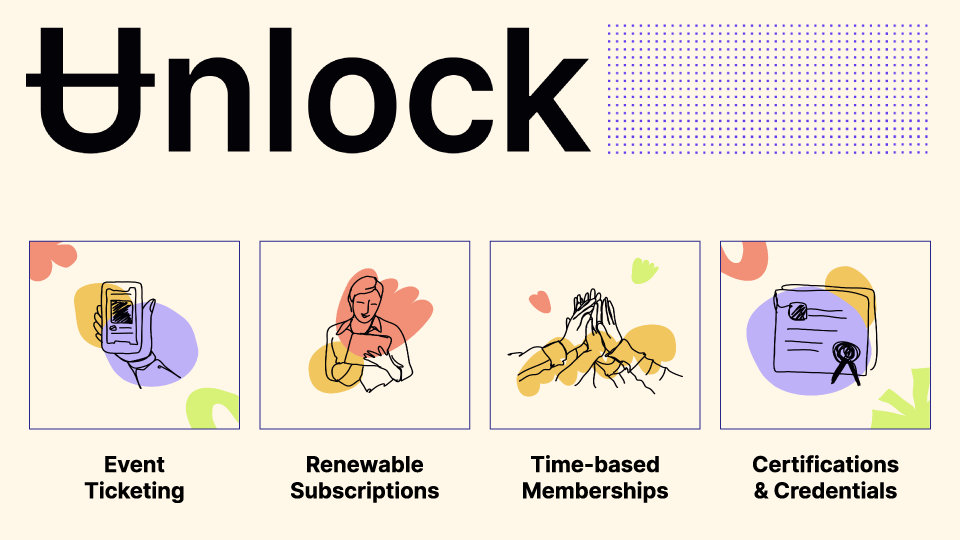
Unlock Protocol lets you create memberships and subscription NFTs in minutes!
👉 LEARN HOW 👈
The Bear Market Is the Perfect Time For Experimentation
Bear markets and recession-like environments are great times for building businesses.
While you’re going through it, it doesn’t seem like it but once you get out the other side, you’ll see why. Because while you as a creator kept building, everyone else left, meaning you’ll be the leading authority in your niche—providing you’re good at what you do 😉
But you have to make ensure that you’re focused on one platform, learn it really well, and distribute a consistent message in the beginning. Otherwise, you’ll never build an audience.
If you haven’t found consistency yet, Joe’s advice is that you have to narrow your focus. If you’re just starting as a content creator, you have to resist wanting to do everything at the same time.
But once you find some success, you can multiply your channels and scale to the moon.
If you want to learn all about what’s happening in the creator economy, you can attend The Tilt’s annual Creator Economy Expo in Cleveland between May 1st and 3rd.
To sweeten the deal you’ll even be able to rub shoulders and listen to our very own Kyle Reidhead who’ll also be speaking at the expo!

FOR THE DOERS
Take Action & Level Up
READ
Learn more about the ways NFTs Provide Real-world Utility.
FOLLOW
Ensure you don’t miss out on Raul’s shitposting by following Web3 Academy on Twitter!
JOIN
Big fan of the World Cup? Join our Web3 Academy Discord and share some football banter!




